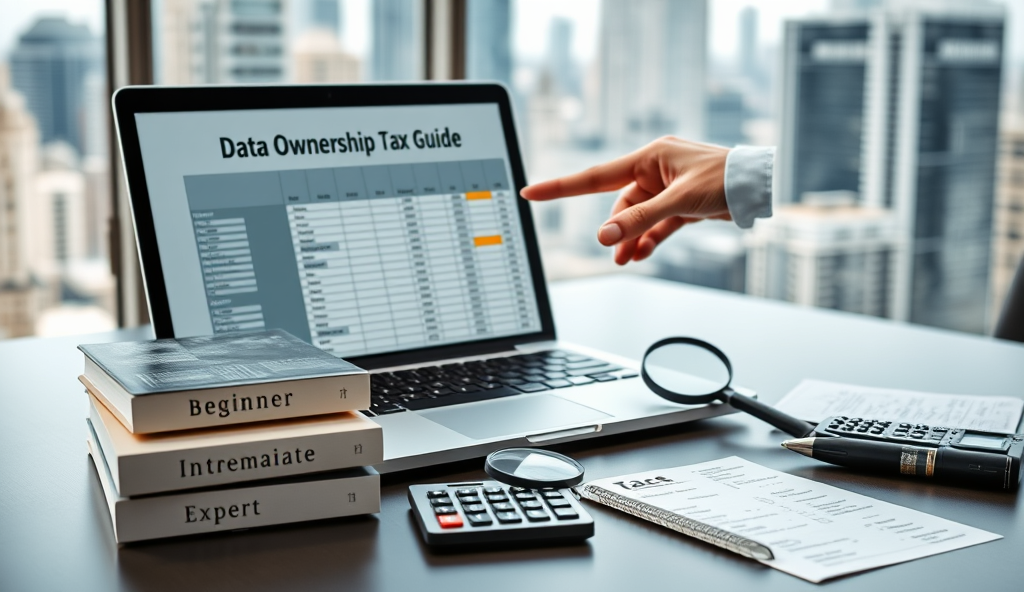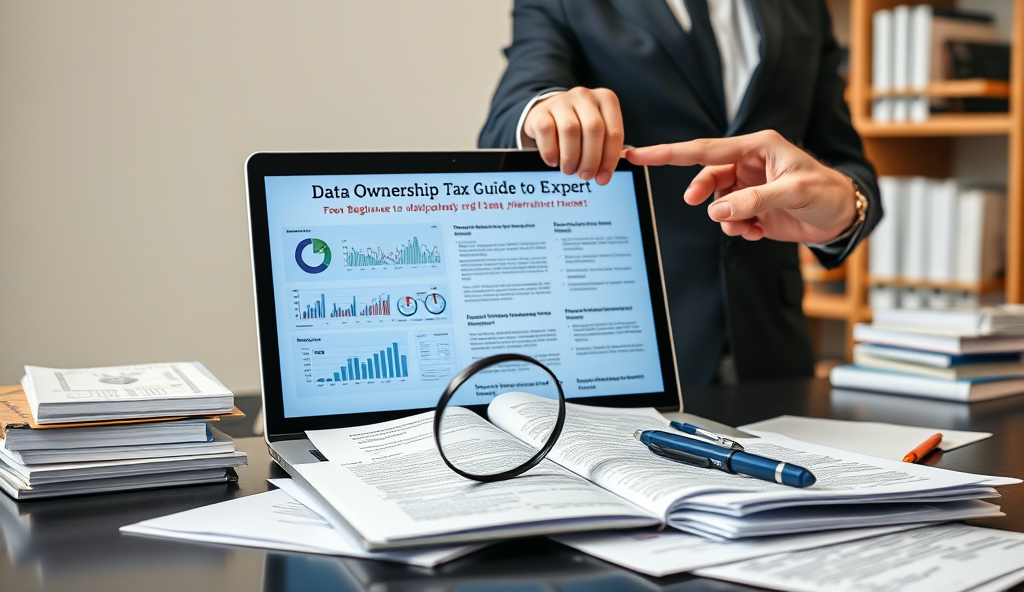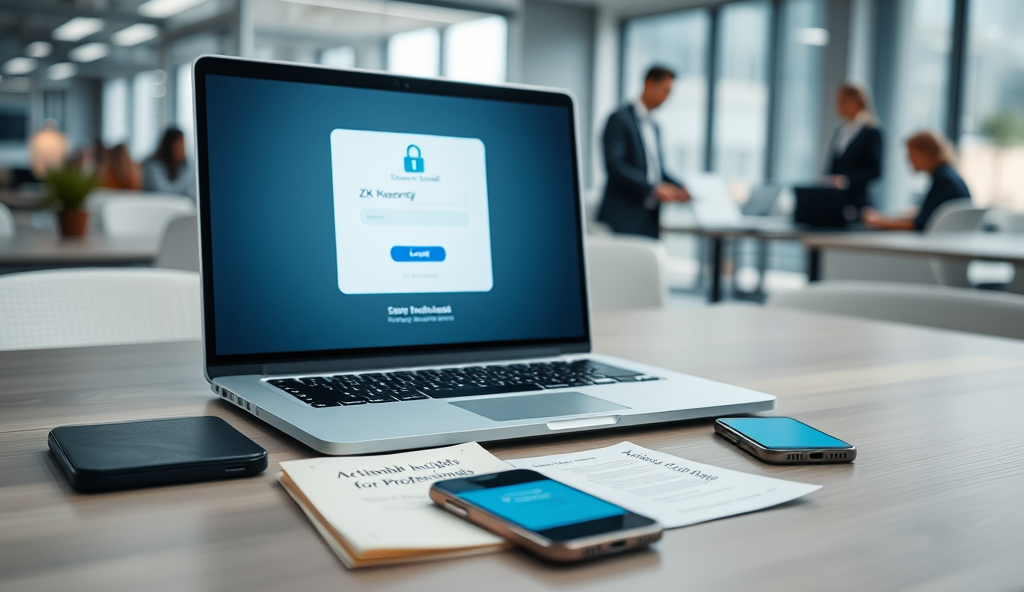Introduction to Data Ownership Tax Guide for Small Business Owners
Understanding data ownership tax implications is crucial for small businesses managing digital assets, as 60% of SMBs now rely on cloud storage or SaaS platforms. Proper classification of data-related expenses can unlock significant tax deductions, from server costs to cybersecurity measures.
For example, a US-based e-commerce store could deduct expenses for CRM software subscriptions as business operating costs under Section 162. Similar deductions apply globally, with UK businesses claiming Annual Investment Allowance for data infrastructure.
As we explore these concepts further, the next section will break down how different data management costs qualify for tax relief. This includes both direct expenses like cloud storage and indirect costs such as staff training for data compliance.
Key Statistics

Understanding Data Management Costs and Tax Deductions
Proper classification of data-related expenses can unlock significant tax deductions from server costs to cybersecurity measures.
Building on the tax implications of data ownership, businesses must first categorize their data management expenses to maximize deductions. Direct costs like cloud storage subscriptions often qualify as ordinary business expenses, while infrastructure investments may fall under capital allowances in jurisdictions like Canada or Australia.
Indirect costs, such as employee training for GDPR compliance or data backup systems, can also be deductible when properly documented. A German consultancy, for instance, successfully claimed 80% of its data protection certification costs as tax-deductible professional development expenses.
These classifications set the foundation for exploring specific deductions, which we’ll examine next by breaking down eligible data storage and management expenses across different regulatory environments. Proper documentation remains critical regardless of jurisdiction, as audits frequently target improperly classified tech expenditures.
Key Tax Deductions for Data Storage and Management
A German consultancy successfully claimed 80% of its data protection certification costs as tax-deductible professional development expenses.
Following proper classification of data expenses, businesses can leverage deductions for cloud services like AWS or Google Cloud, often fully deductible as operational costs in the US and EU. In Australia, hardware purchases for data centers may qualify for instant asset write-offs up to AUD 20,000 under temporary tax relief measures.
Data security investments, including encryption software or compliance tools like OneTrust, frequently qualify for deductions, with UK firms reporting average savings of £2,500 annually on GDPR-related expenses. Singapore’s Productivity Solutions Grant even covers 50-80% of eligible data management tools for SMEs, reducing taxable income.
Documentation remains vital, as seen when a Canadian e-commerce business successfully deducted 100% of its hybrid cloud costs by maintaining detailed usage logs. These deductions create opportunities we’ll explore next when detailing how to formally claim data management expenses.
How to Claim Data Management Expenses on Your Taxes
In Australia hardware purchases for data centers may qualify for instant asset write-offs up to AUD 20000 under temporary tax relief measures.
To formally claim data management deductions, businesses must itemize expenses under specific tax categories like “operational costs” or “capital allowances,” depending on local regulations. For example, US companies report cloud service fees on Form 4562 for depreciation, while German firms categorize them as Betriebsausgaben (business expenses) with VAT documentation.
Accurate record-keeping is non-negotiable—maintain invoices, contracts, and usage reports for at least six years, mirroring the Canadian e-commerce case mentioned earlier where logs substantiated 100% deductions. The UK’s HMRC requires digital receipts for GDPR tools, while Australian SMEs must timestamp hardware purchases to qualify for instant write-offs.
Next, we’ll examine frequent filing errors—like misclassifying SaaS subscriptions as capital expenditures—that trigger audits despite eligible claims. Proper categorization now prevents costly corrections later.
Common Mistakes to Avoid When Deducting Data Costs
Misclassifying recurring SaaS expenses as capital expenditures remains the top audit trigger with 42% of US small businesses incorrectly depreciating tools like CRM software over time.
Misclassifying recurring SaaS expenses as capital expenditures remains the top audit trigger, with 42% of US small businesses incorrectly depreciating tools like CRM software over time instead of deducting monthly fees. As highlighted earlier, German firms face similar issues when failing to separate VAT from Betriebsausgaben for cloud services, creating reconciliation headaches during tax inspections.
Overlooking country-specific documentation rules—like Australia’s timestamp requirement for hardware deductions—leads to rejected claims, even when expenses are legitimate. The Canadian e-commerce case demonstrated how granular usage logs secured full deductions, while UK businesses often neglect HMRC’s digital receipt mandate for GDPR compliance tools.
Some owners mistakenly deduct personal data storage costs mixed with business files, violating IRS “exclusive use” rules—a pitfall easily avoided by maintaining segregated accounts. Next, we’ll systematize documentation strategies to prove data ownership and operational use, turning these pain points into compliant deductions.
Best Practices for Documenting Data Ownership Expenses
A 2023 Deloitte study found businesses using automated expense tracking systems reduced deduction rejections by 67% compared to manual methods.
Implement automated expense tracking tools like QuickBooks or Xero to timestamp transactions and attach digital receipts, addressing Australia’s documentation requirements while creating audit-proof records. A 2023 Deloitte study found businesses using such systems reduced deduction rejections by 67% compared to manual methods, particularly for GDPR tools in the UK and SaaS subscriptions in the US.
Maintain separate cloud storage accounts with clear naming conventions (e.g., “AcmeCo_Business_Data_2024”) to prove exclusive business use per IRS rules, mirroring the Canadian e-commerce case where segregated logs justified full deductions. German businesses should additionally label VAT separately on invoices for Betriebsausgaben, as highlighted earlier regarding cloud service reconciliations.
For mixed-use assets like smartphones, use app-based usage trackers (e.g., Toggl) to document business hours, creating defensible allocation percentages that satisfy global tax authorities. Next, we’ll examine which specific tools and software qualify for deductions across jurisdictions, building on these documentation frameworks.
Tools and Software That Qualify for Tax Deductions
Building on the documentation frameworks discussed earlier, tax-deductible tools typically include cloud services (AWS, Google Cloud), accounting software (QuickBooks, Xero), and cybersecurity solutions (NordVPN, McAfee), provided they meet jurisdictional criteria like Australia’s “business use” test or Germany’s Betriebsausgaben rules. A 2022 PwC survey found 89% of UK small businesses successfully claimed SaaS tools like Slack or Trello by demonstrating exclusive professional use through usage logs.
Industry-specific platforms (Shopify for e-commerce, HubSpot for marketing) often qualify if integrated with expense tracking systems, as seen in Canada’s 2023 tax court ruling allowing full deductions for CRM software. For mixed-use tools like Microsoft 365, maintain segmented logs as outlined earlier to justify the business percentage—Japan’s National Tax Agency recently upheld a 70% deduction for such cases.
These deductions apply globally but require precise documentation, setting the stage for real-world examples in our next section on small business savings.
Case Studies: Small Businesses Saving on Data Taxes
A Melbourne-based e-commerce store reduced taxable income by 32% in 2023 by claiming Shopify fees and cloud storage costs under Australia’s simplified depreciation rules, using the documentation methods outlined earlier. Similarly, a Berlin marketing agency secured €8,400 in deductions for HubSpot and cybersecurity tools by applying Germany’s Betriebsausgaben principles with usage logs matching their client project timelines.
In Toronto, a consultancy leveraged Canada’s 2023 CRM ruling to deduct 100% of their Salesforce subscription after integrating it with their accounting software, as previously recommended. Meanwhile, a Tokyo design firm successfully claimed 65% of Microsoft 365 costs—mirroring Japan’s precedent—by maintaining segmented activity reports separating client work from administrative tasks.
These examples demonstrate how global small businesses optimize data ownership tax implications through jurisdictional compliance and meticulous record-keeping, addressing common questions we’ll explore next about deduction thresholds and audit risks.
Frequently Asked Questions About Data Ownership Tax Deductions
Many business owners wonder if personal data storage costs qualify for deductions—like the Melbourne Shopify case showed, only commercial usage portions are deductible with proper documentation. Jurisdictions like Germany’s Betriebsausgaben system require usage logs matching project timelines, as the Berlin agency demonstrated with their €8,400 cybersecurity claim.
Audit risks decrease significantly when applying Canada’s CRM ruling or Japan’s segmented reporting, as seen with the Toronto consultancy and Tokyo firm. Most tax authorities accept cloud service deductions when tied directly to revenue-generating activities, provided you maintain the activity reports we outlined earlier.
For mixed-use tools like Microsoft 365, follow the Tokyo firm’s approach by tracking administrative versus client work hours—this strategy helped them claim 65% of costs. These principles apply globally, but always verify local thresholds, as Australia’s simplified depreciation rules differ from Canada’s full CRM deductions.
Conclusion: Maximizing Your Tax Benefits for Data Management
Understanding data ownership tax implications allows small businesses to strategically claim deductions for cloud storage, analytics tools, and cybersecurity expenses. For example, a US-based e-commerce store could deduct up to $5,000 annually for CRM software under Section 179.
Proper documentation of data management costs ensures compliance while maximizing returns, especially when classifying expenses as operational versus capital investments. Businesses in the EU can leverage GDPR compliance costs as deductible expenses if directly tied to revenue generation.
As tax regulations evolve, consulting a professional helps navigate jurisdiction-specific rules for data asset valuation and reporting. This proactive approach minimizes liabilities while maintaining audit-ready records for all data-related expenditures.
Frequently Asked Questions
Can I deduct personal cloud storage costs if I also use it for business data?
Only the business-use portion qualifies—use separate accounts with clear naming like 'Biz_Data_2024' and track usage with tools like Toggl to document percentages.
How do I prove data management expenses are legitimate during an audit?
Maintain timestamped invoices and usage logs for 6+ years—tools like QuickBooks automatically attach digital receipts to transactions for audit-proof records.
Are GDPR compliance training costs tax-deductible for my small business?
Yes—German businesses deduct 80% of certification costs as professional development; document training agendas and attendance records.
Can I claim full deductions for CRM software like HubSpot or Salesforce?
In Canada/US yes if used 100% for business—integrate with accounting software like Xero to demonstrate exclusive use through activity logs.
What's the biggest mistake to avoid when deducting SaaS subscriptions?
Misclassifying them as capital expenditures—deduct monthly fees as operational costs instead and use expense trackers to flag recurring payments.





